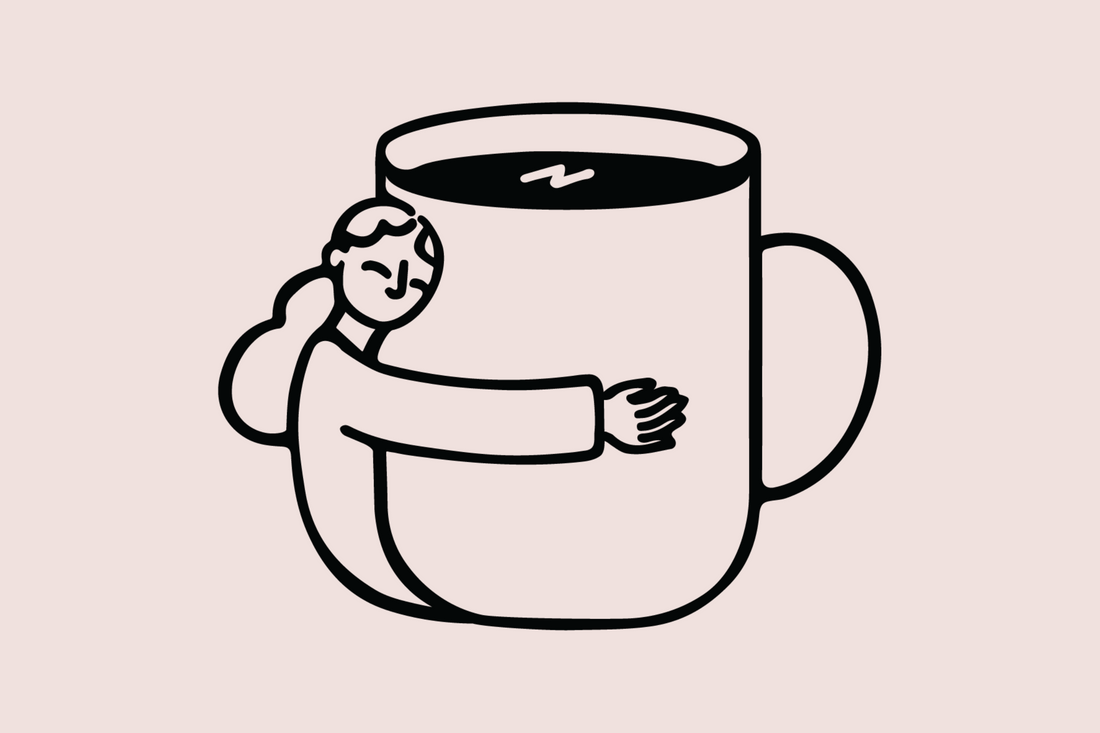
Caffeine in Coffee
Share

Caffeine is a natural stimulant most commonly found in coffee, tea, and cacao plants. It works primarily by blocking the action of adenosine, a neurotransmitter that promotes sleep and relaxation. Caffeine functions within the coffee plant as an insecticide, its presence in the coffee fruit and seed acts to deter small insects.
How much caffeine in raw coffee
The amount of caffeine in raw coffee varies depending on species, variety and environmental conditions. Robusta coffee has approximately 2.2% caffeine by weight. Arabica coffee has approximately 1.4-1.6% caffeine by weight. Some varieties of Arabica, such as Laurina, naturally have lower levels of caffeine - approximately 0.4-1.0%. There are small variations within varieties that can be due to elevation and soil conditions.
How much caffeine in decaf coffee
When coffee is decaffeinated not all the caffeine is removed. Under UK regulations decaffeinated coffee can have a maximum 0.1% caffeine by weight. So the coffee is 99.9% caffeine free – but it started at 98.8% caffeine free, so a reduction in caffeine of just over 90%.
How is caffeine extracted into the coffee beverage?
Caffeine is extracted from ground coffee during the brewing process. When hot water passes through the coffee grounds, it dissolves and extracts the caffeine, along with other soluble compounds, into the beverage.
How much caffeine is it safe to consume?
The European Food Safety Authority advises an intake of up to 400mg per day is safe for adults and 200mg per day is safe for pregnant woman.
What effects level of caffeine in your cup
As well as species and variety of coffee, brew method and coffee dose have a significant effect on caffeine levels in the final brew.
Brew Method
The brew method has a significant effect of caffeine in your coffee. This is due to the different extractions taking place – with grind size and brew time the main parameters having an impact. Of the common brew methods, espresso has the most concentrated caffeine content at 300-400mg/100mL compared to 60-70mg/100mL for pour-over filter coffee. Coffee brewed in a cafetiere is likely to have slightly more caffeine than a pour over filter, and a stovetop moka pot is somewhere between an espresso and filter.
When we take into account standard drink sizes in the UK, this means a pour over filter of 300mL will have around 195mg caffeine, whereas a standard 36mL espresso will have 126mg caffeine.
Amount of coffee used
It goes without saying - the amount of coffee used in a brew significantly influences the caffeine content of the final beverage. Using more coffee grounds results in a higher concentration of caffeine because this provides more surface area for the water to extract caffeine and other soluble compounds. Adjusting the amount of coffee used allows you to control the caffeine strength of your drink, tailoring it to your personal preference. Weighing your coffee and monitoring volume of water is also a key to brewing consistent coffee at home. 60 grams per Litre of coffee is a good starting point for filter, cafetiere and AeroPress brewing at home.
Roast Level?
Roast level does not significantly impact the level of caffeine in coffee. Pure caffeine sublimates, or transitions from a solid to a gas, at around 180°C. However, this isn't observed in coffee roasting due the short duration of high temperatures and the complex environment within the roasting drum. Studies have reported that caffeine is more easily extracted from darker roast coffees, but the magnitude of this effect isn't significant.
Summary
The main steps you can take as a coffee drinker to reduce your caffeine intake are:
- Avoid Robusta.
- Be mindful of your brew method, espresso based drinks will likely have less caffeine than a filter coffee.
- Be careful of your coffee dosage when brewing at home. Weigh your coffee and water for best brewing.
- If you are interested to step down your caffeine intake significantly you can try lower caffeine coffee varieties such as Laurina or decaffeinated coffee.
Because of all the variables discussed, it is difficult to equate the safe caffeine limits to a number of coffee drinks. But here are some conservative estimates, assuming the coffees are regular specialty arabica:
- 400mg per day for adults is approximately equivalent to 2 regular filter coffees or 3 double espressos.
- 200mg per day guidance for pregnant women is approximately equivalent to 1 filter coffee or 1.5 double espressos.
We roast and sell four types of coffee - decaf, half caf, low caf and full caf. Have a look at our decaf coffees if you want minimal caffeine, or we have naturally low caffeine coffees and half caf blends for those who want around half of the caffeine typically found in specialty arabica coffee.
References
1. dePaula, J., & Farah, A. (2019). Caffeine Consumption through Coffee: Content in the Beverage, Metabolism, Health Benefits and Risks. Beverages, 5(2), 37. [Link to the article if available online].
2. Crema Coffee Garage, & University of Newcastle. (Year). Understanding Caffeine Content of Popular Brewing Methods within the Australian Coffee Consumer Market. [Link to the article if available online].
3. Dr. Wakefield. (2024). Caffeine in Coffee: Should Roasters Care? [Online]. Available at: https://drwakefield.com/news-and-views/caffeine-in-coffee-should-roasters-care/ [Accessed 16 June 2024].
